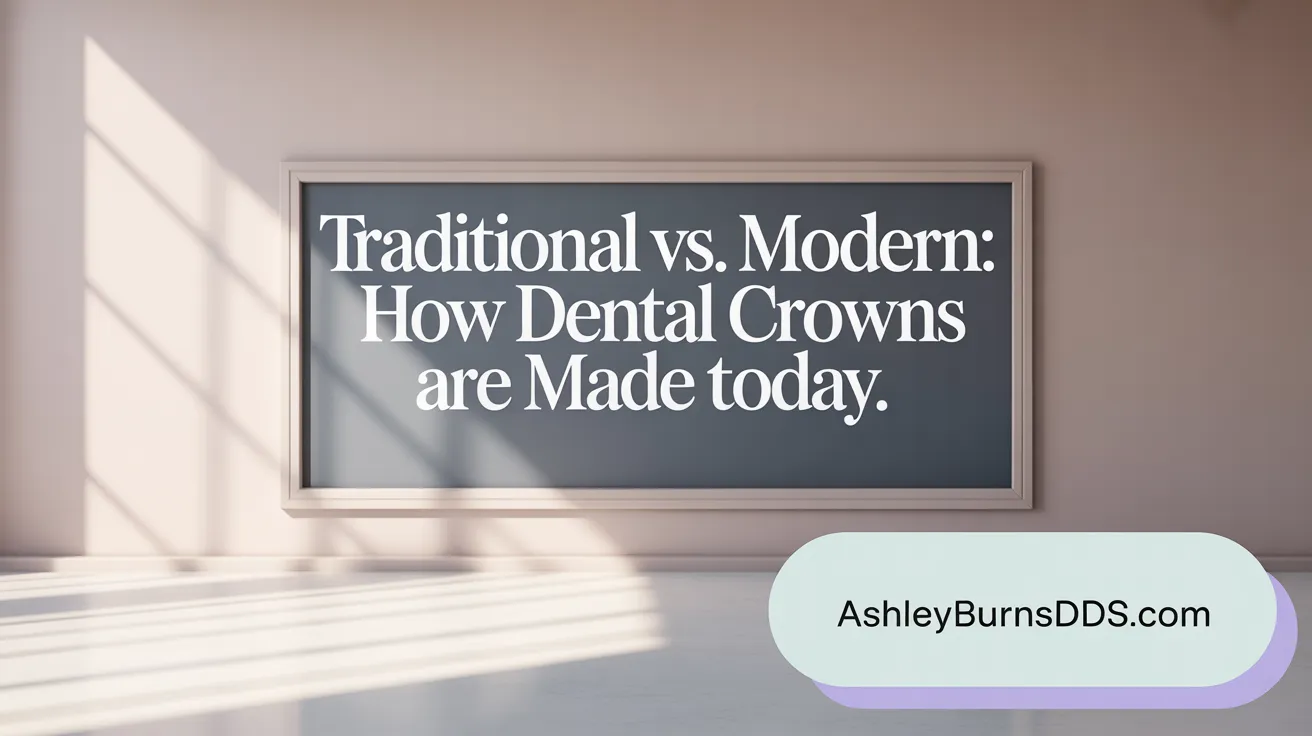Introduction to Dental Crowns
Dental crowns play a vital role in restorative dentistry, offering protection, strength, and aesthetic enhancement to damaged or weakened teeth. This article provides an in-depth, step-by-step guide to the dental crown procedure, types and materials, fabrication processes, placement, care, potential risks, technological advancements, and answers to common patient questions to equip readers with comprehensive knowledge before undergoing treatment.
What Is a Dental Crown and Why Is It Used?

What is a dental crown and what is its purpose?
A dental crown is a tooth-shaped cap that fits over a damaged or weakened tooth. Its main purpose of dental crowns is to restore the tooth's shape, size, strength, and appearance. Crowns are an essential part of restorative dentistry and help protect against further decay or damage.
Situations warranting a dental crown
Crowns are recommended in numerous dental situations. They are commonly used to cover teeth that have undergone root canal treatment, are cracked, broken, or heavily decayed. Large fillings that weaken the tooth structure may also necessitate a crown for added support. Additionally, crowns can improve the appearance of discolored or misshapen teeth, hold dental bridges in place, or cover dental implants. For more details, see Dental Crown Uses and Benefits.
Materials used for dental crowns and their properties
Different dental crown materials are used to make dental crowns, each offering distinct benefits. Metal crowns, such as gold or other alloys, are durable and long-lasting but less aesthetic. Porcelain and ceramic crowns provide a natural look that matches surrounding teeth, making them ideal for front teeth. Zirconia crowns combine strength with aesthetic appeal and are resistant to fractures. Sometimes, crowns may be a combination of materials, like porcelain fused-to-metal, which offers both strength and natural appearance.
Proper material selection depends on the tooth’s location, aesthetic needs, functional demands, and possible allergies. With proper care, dental crown longevity can range between five and fifteen years or even longer, playing a crucial role in maintaining dental health and restoring confidence in your smile.
Step-by-Step Overview of the Dental Crown Procedure

Initial consultation and examination
The process begins with a thorough dental evaluation, including an oral exam and possibly X-rays, to assess the condition of the tooth and surrounding bone. The dentist discusses the patient's needs and the best type of crown for the situation.
Tooth preparation with local anesthesia
Once confirmed as suitable for a crown, the dentist administers local anesthesia to numb the area. The damaged or decayed parts of the tooth are then carefully reshaped by removing a small amount of enamel. This creates space for the crown and ensures a good fit.
Taking impressions or digital scans
After shaping the tooth, impressions are taken using a putty-like material or digital scanners. These precise measurements help create a crown that matches the size, shape, and color of the natural teeth. The impressions or scans are sent to a dental laboratory or entered into an in-office CAD/CAM system.
Temporary crown placement
While the permanent crown is being fabricated, a temporary crown made of acrylic or resin is placed over the prepared tooth. This temporary covers and protects the tooth, maintaining function and aesthetics during the waiting period.
Permanent crown fabrication timelines
Traditional lab-made crowns typically take about one to three weeks to complete. During this time, the crown is custom-crafted to perfectly fit the prepared tooth. Alternatively, using CAD/CAM technology allows for same-day crowns, which can be designed, milled, and fitted within a few hours.
Final crown fitting and cementation
When the permanent crown is ready, the dentist removes the temporary, checks the fit, color, and bite alignment of the new crown, and makes necessary adjustments. The crown is then cemented in place using a special dental adhesive. The dentist ensures the bite is comfortable and makes final polishing touches.
This step-by-step process ensures the crown restores the tooth’s strength, function, and appearance effectively. Proper care after placement helps extend the lifespan of your new crown, which can last from 5 to 15 years or longer.
Types of Dental Crowns and Materials Used
 Dental crowns are available in several types, each made from different materials tailored to meet specific needs of strength, aesthetics, and functionality. For comprehensive information on the Types of Dental Crowns and Dental Crown Materials, please refer to the linked resources.
Dental crowns are available in several types, each made from different materials tailored to meet specific needs of strength, aesthetics, and functionality. For comprehensive information on the Types of Dental Crowns and Dental Crown Materials, please refer to the linked resources.
Porcelain and Ceramic Crowns: These crowns are popular for their highly natural appearance, making them ideal for front teeth. They mimic the translucency of natural enamel and are chosen for cosmetic improvements. Learn more about Porcelain dental crowns and All-Ceramic Dental Crowns.
Metal Crowns: Made from gold, palladium, or other metal alloys, metal crowns are renowned for their durability and resistance to breaking. They are often used for molars where strength is essential. See details on Metal Dental Crowns and Gold alloy crowns.
Porcelain-Fused-to-Metal (PFM) Crowns: Combining the strength of metal with the aesthetic appeal of porcelain, these crowns provide a good balance of durability and appearance. They have a metal base covered by a porcelain layer. For more, visit Porcelain-Fused-to-Metal Crowns.
Zirconia Crowns: These crowns are both remarkably strong and compatible with gum tissue. Zirconia offers a natural look and is highly resistant to chips and cracks, making it suitable for both front and back teeth. Further info is available on Zirconia crowns and Dental Crown Materials.
Lithium Disilicate (E-Max) Crowns: Known for their excellent aesthetic qualities and strength, these crowns are often used in visible areas where appearance matters but durability is also needed. More about Lithium-disilicate crowns and Dental Crown Procedures.
Other Types: Gold crowns are highly durable but less aesthetic, mainly used in back teeth. Stainless steel crowns are commonly used for children. Resin crowns are an affordable option but tend to wear down more quickly. For additional details, see Dental Crown Materials.
Criteria for Material Selection: The choice depends on several factors including the tooth’s location, the aesthetic demands, the patient’s bite, allergies, and budget. For example, porcelain and zirconia are favored for their cosmetic qualities, while metal crowns are preferred for their longevity and strength in molar regions. Read more on Dental Crown Benefits and Choosing the Right Dental Crown.
Summary Table:
| Crown Type | Common Material | Benefits | Suitable For |
|---|---|---|---|
| Porcelain | Porcelain, ceramic | Natural look, aesthetic | Front teeth |
| Metal | Gold, alloys | Durability, strength | Molars, heavy chewing |
| PFM | Metal core with porcelain overlay | Balance of strength and appearance | Both front and back teeth |
| Zirconia | Zirconia ceramic | Strong, biocompatible | Both front and back teeth |
| Lithium Disilicate | E-Max ceramic | Aesthetic, durable | Visible front teeth |
Choosing the right crown material involves considering these factors and discussing options with your dentist for optimal results. Detailed guidance on the Dental Crown Procedure can help you understand the full process.
Dental Crown Fabrication: Traditional and Modern Techniques
 The process of creating dental crowns combines artistry and advanced technology to produce restorations that are durable and natural-looking. Traditionally, crown fabrication involved a multi-step laboratory process. First, the dentist takes an impression of the prepared tooth using rubber-like materials, which is then sent to a dental laboratory. Skilled technicians at the lab pour models from these impressions, building a wax-up of the crown that is meticulously shaped to match the surrounding dentition. They then apply porcelain, ceramic, or metal materials, pressing or casting the crown. Multiple layers of porcelain are built up and fired in a furnace to match the tooth's color, translucency, and texture, resulting in a lifelike appearance.
The process of creating dental crowns combines artistry and advanced technology to produce restorations that are durable and natural-looking. Traditionally, crown fabrication involved a multi-step laboratory process. First, the dentist takes an impression of the prepared tooth using rubber-like materials, which is then sent to a dental laboratory. Skilled technicians at the lab pour models from these impressions, building a wax-up of the crown that is meticulously shaped to match the surrounding dentition. They then apply porcelain, ceramic, or metal materials, pressing or casting the crown. Multiple layers of porcelain are built up and fired in a furnace to match the tooth's color, translucency, and texture, resulting in a lifelike appearance.
In recent years, digital technologies like CAD/CAM (Computer-Aided Design and Computer-Aided Manufacturing) have revolutionized crown fabrication. Using intraoral scanners, the dentist can capture highly precise digital impressions directly in the patient’s mouth. Software then designs the crown with exact fit and aesthetic details. This digital design is transmitted to a milling machine that carves the crown from blocks of ceramic, zirconia, or other materials in-office or at a nearby lab, often within a single appointment. This method reduces fabrication time significantly.
When it comes to porcelain crowns, the process involves layering ceramic materials in thin shells. These layers are built up meticulously and fired multiple times at high temperatures to increase strength and match surrounding teeth. Once the crown solidifies and attains the desired shade and translucency, it undergoes contouring, glazing, and polishing to ensure a seamless appearance.
Modern digital methods, such as CEREC, exemplify efficiency and precision. They allow for same-day crowns, eliminating the need for temporary restorations and multiple visits. The integration of these advanced techniques ensures restorations are not only functional but also harmonious in appearance, offering patients a long-lasting and aesthetically pleasing solution.
Crown Fitting, Placement, and Aftercare
What happens during the fitting and placement of a dental crown?
During the fitting and placement of a dental crown, the dentist ensures that the crown fits correctly in terms of shape, size, and color. First, the dentist will check the fit and make any necessary adjustments to ensure comfort and proper bite alignment. Before placing the crown, the tooth is usually reshaped by removing some enamel, a step often performed under local anesthesia to prevent discomfort.
Impressions of the prepared tooth are then taken, either with physical molds or digital scans, to custom-make the crown. While waiting for the permanent crown, a temporary crown is placed to protect the tooth.
When the final crown is ready—usually after a couple of weeks—it replaces the temporary. The dentist removes the temporary, fits the crown onto the tooth, makes final adjustments if needed, and permanently bonds it with dental cement. Post-placement, patients should follow their dentist’s advice on oral care and avoid hard or sticky foods to preserve the crown.
What care and maintenance are required after getting a dental crown?
Maintaining a dental crown involves good oral hygiene practices. Brush twice daily with a soft-bristled toothbrush and non-abrasive fluoride toothpaste. Floss gently around the crown, especially once the initial healing phase is complete. Avoid hard, sticky, or chewy foods initially, as they can dislodge or damage the crown.
If you have a temporary dental crown, avoid chewing hard foods and sticky treats, and be cautious not to floss directly around it to prevent dislodgement. If the temporary crown becomes loose or falls out, contact your dentist promptly for repair or replacement.
Rinsing with warm salt water can help reduce swelling, soothe sensitivity, and prevent infection after the procedure. Regular dental check-ups, at least twice a year, are vital to monitor the health of your crown and surrounding teeth, ensuring its longevity and your overall oral health.
Risks, Advances, and Patient Concerns in Dental Crown Procedures

What are the potential risks and complications associated with dental crowns?
Potential risks and complications linked to dental crowns include tooth sensitivity, especially if the crown does not fit perfectly or exposes the dentin layer, causing discomfort to hot or cold stimuli. Crown loosening or detachment can occur over time due to failure of the cement or adhesive, but such crowns can often be recemented if undamaged. There is also the risk of decay forming at the edges of the crown where plaque can accumulate, leading to bacterial growth and gum issues. Allergic reactions to materials such as certain metals are rare but possible, especially in individuals with sensitivities. Porcelain crowns may chip or crack under heavy biting pressure, necessitating repair or replacement. Improperly fitted crowns can result in bite problems or malocclusion, and inadequate oral hygiene can lead to gum irritation or recession.
What technological advances have improved dental crown fabrication, such as CEREC?
Innovations like CEREC have revolutionized the process of making dental crowns through the use of CAD/CAM technology. This allows dentists to design and mill crowns from ceramic blocks directly in the office, enabling the creation of durable, aesthetically natural-looking crowns within a single appointment. With high-precision digital impressions, the fit and appearance are optimized, reducing the need for multiple visits and temporary crowns. The digital scan captures detailed measurements of the prepared tooth, ensuring a more accurate fit. The milling process carves the ceramic with high accuracy, producing long-lasting restorations that closely resemble natural teeth. These advancements streamline the treatment process, improve comfort for patients, and enhance the final aesthetic outcome.
What are common patient questions and concerns regarding dental crown procedures?
Patients typically inquire about how long their crowns will last, with a usual lifespan of 10 to 15 years, depending on materials and oral care. Concerns about pain are common, but most find the procedure painless due to effective anesthesia; some may experience temporary sensitivity afterwards. Cost is another significant concern, as crowns can range from $800 to $1,500 or more, depending on material choice and complexity; insurance coverage varies. Aesthetic questions about the appearance of crowns and their ability to match natural teeth are frequently asked. Patients also want guidance on how to care for their crowns—regular brushing, flossing, avoiding hard or sticky foods, and scheduling routine dental checkups are essential. Overall, clear communication with the dentist helps reassure patients and ensures proper maintenance for long-term success. For more details, see Dental Crown Care.
Conclusion
Dental crowns are an essential solution for restoring damaged teeth, offering durability, strength, and aesthetic improvement. Understanding the comprehensive process—from initial assessment and tooth preparation to crown fabrication, fitting, and aftercare—helps patients approach treatment confidently. With advances such as CAD/CAM technology and CEREC, the procedure can be more convenient and efficient than ever before. While risks and complications exist, proper care and regular dental visits maximize the longevity of crowns. Addressing common patient concerns about pain, cost, and maintenance further supports positive treatment experiences. Ultimately, dental crowns enhance oral health and maintain a confident smile for many years when properly managed.
